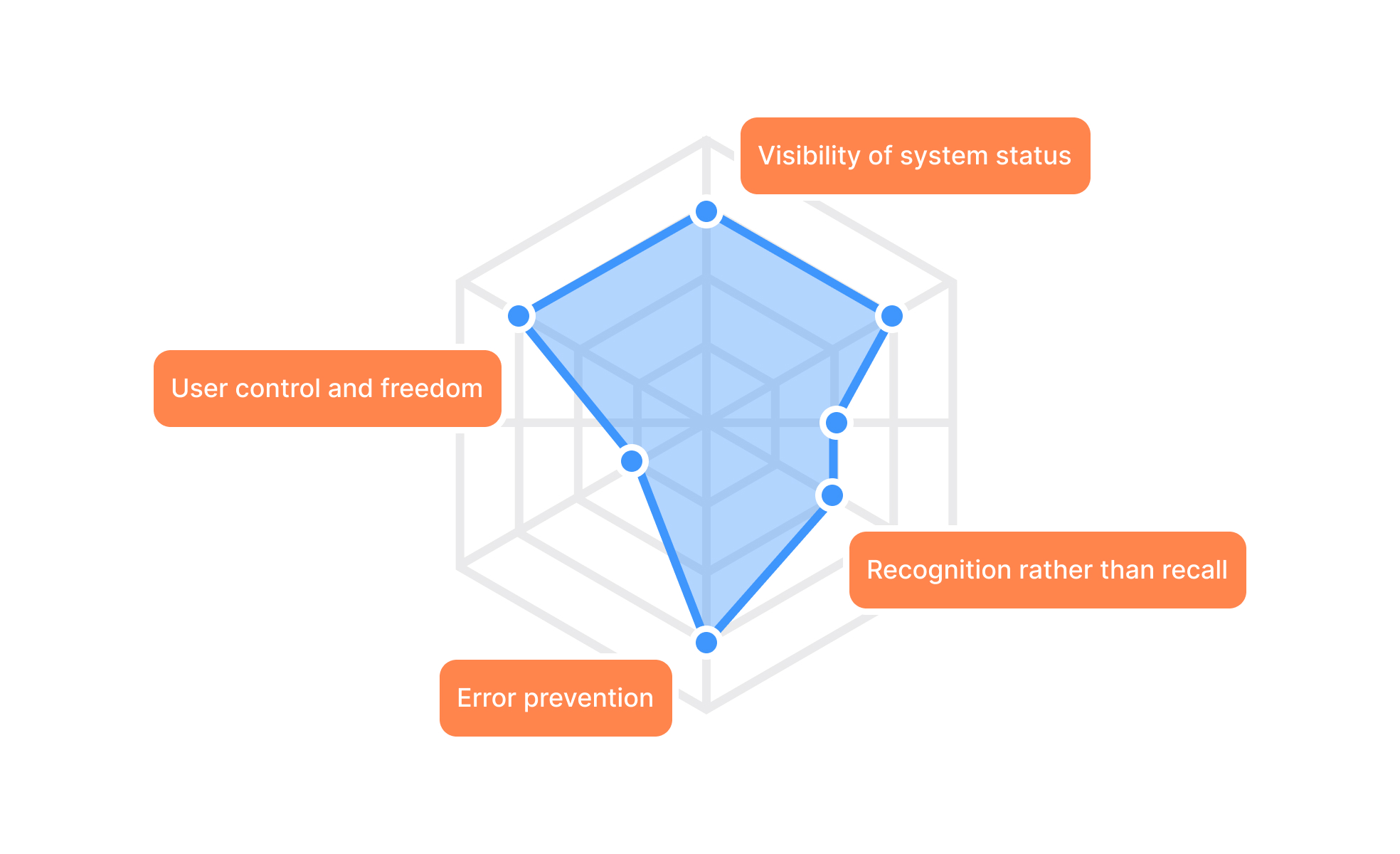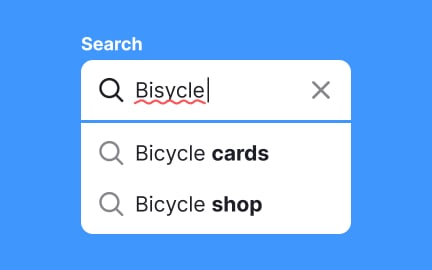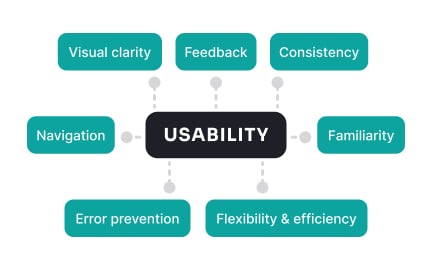Heuristics
Heuristics are practical guidelines that help evaluate product usability, guiding designers and teams in spotting issues and improving experiences.

Heuristics are simplified principles or rules of thumb used to make judgments or solve problems efficiently. In product design and development, they serve as frameworks for evaluating usability and guiding decisions without needing exhaustive analysis. The most well-known set in UX comes from Jakob Nielsen, who defined ten usability heuristics that remain widely applied across digital products.
For UX designers, heuristics provide a lens for evaluating interfaces. They highlight recurring issues, such as unclear feedback, inconsistent navigation, or lack of user control. Instead of testing every scenario with users, designers can apply heuristics to identify common barriers quickly. This makes them valuable for refining wireframes, prototypes, and live products alike.
Accessibility intersects strongly with heuristics. Guidelines such as providing system feedback, supporting flexibility, and preventing errors directly influence how inclusive a product is. When applied thoughtfully, heuristics encourage teams to consider diverse needs, helping ensure that products remain usable for audiences with varying abilities and contexts.
Real-world applications of heuristics are visible across industries. E-commerce teams apply them to checkout flows, ensuring clarity and consistency in steps. Productivity tools use heuristics to evaluate dashboards, checking that information hierarchy and error handling meet user expectations. Even outside digital design, heuristics guide problem-solving in areas like decision-making, education, and process management.
Heuristics are not a substitute for user testing, but they are an efficient complement. They allow teams to spot obvious issues early and refine products before running costly studies. Combined with usability testing, they create a balanced approach that merges expert evaluation with real-world feedback.
Finally, heuristics illustrate the value of simplicity. By boiling down complex design considerations into memorable principles, they provide a shared language for cross-functional teams. Whether used to spot flaws or confirm strengths, heuristics help maintain focus on the human side of design.
Learn more about this in the Heuristic Evaluation Exercise, taken from the Qualitative UX Research Methods Lesson, a part of the UX Research Course.
Key Takeaways
- Heuristics are practical rules for evaluating usability.
- Designers apply them to spot common issues in interfaces.
- Accessibility benefits from heuristic principles like error prevention.
- Applied in e-commerce, productivity tools, and education.
- Best when combined with real-world user testing.
Jakob Nielsen’s ten heuristics are widely used, including visibility of system status, match between system and real-world language, user control and freedom, error prevention, and consistency. These provide a checklist for evaluating product interfaces.
Different teams adapt them to context. For example, mobile-first products may add heuristics about touch interactions, while enterprise systems may stress error tolerance.
Heuristics are flexible guidelines meant to highlight general usability concerns, while accessibility standards are formal rules, such as WCAG, that must be followed to meet legal or ethical requirements. Heuristics provide direction; accessibility standards provide enforceable criteria.
When applied together, they create stronger outcomes: heuristics improve usability overall, while accessibility standards ensure inclusion for all.
No. Heuristics provide expert-driven evaluations, while usability testing validates findings with actual users. Heuristics help teams save time and catch obvious problems early, but they cannot predict how users will behave in real scenarios.
The most effective approach combines both methods. Heuristics guide early decisions, while user testing confirms whether changes actually improve experiences.
Recommended resources
Courses

Color Psychology

UX Writing

UX Research
Lessons
Exercises
Projects

Heuristic Evaluation - Flo Mobile app

Talent searching platform profile page concept














